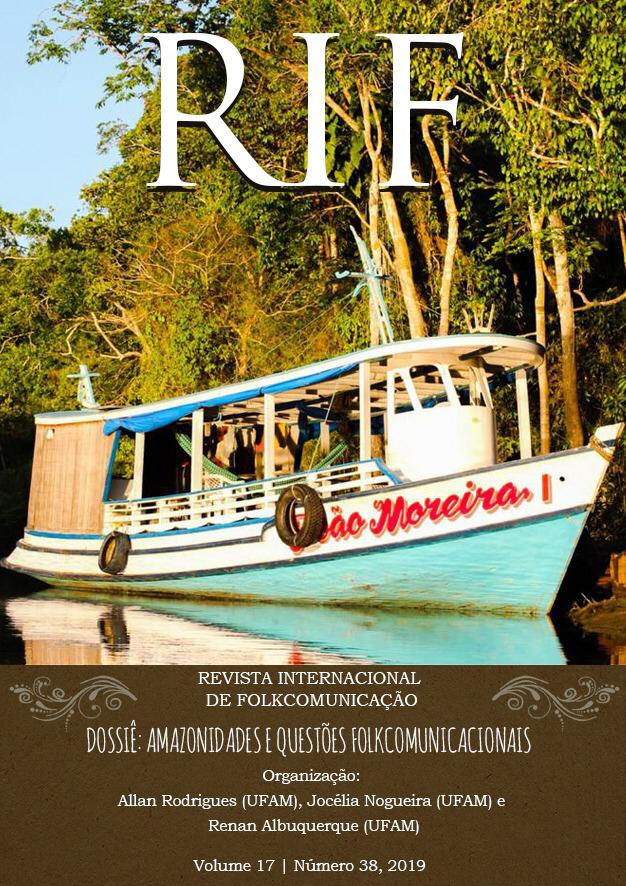Communication, culture and cyberspace: Analysis on the educational role of the folkloric project Cordel Animado!
DOI:
https://doi.org/10.5212/RIF.v.17.i38.0009Abstract
The present work aimed to analyze how the Cordel Animado! contributes to the education of children, from a popular northeastern media, the cordel, linked to a global media, the internet, generating a folkmidiático product. The project studied, written by Mariane Bigio and Milla Bigio from Pernambuco, has been published since 2014 through a personal blog and a YouTube channel. In them are written narratives of children's cords and educational stuff built with music, sound and theatrical interpretation. To make the research, we use as main theoretical bases the Theory of Folkcommunication, Educommunication and Popular Education. The qualitative methodology was configured in the stages of bibliographic research, as well as in the analysis and observation of the educational and communicational practices of the contents available on the internet. From this theoretical-methodological contribution, we conclude that the political-pedagogical project of Cordel Animado! is based on democratic, inclusive and popular principles, fostering children's citizenship education. Cordel; Education; Folkommunication; Culture; Citizenship.
Downloads
Downloads
Published
How to Cite
Issue
Section
License

Este obra está licenciado com uma Licença Creative Commons Atribuição 4.0 Internacional.
Os autores são responsáveis, em qualquer que seja o formato do texto, pelas opiniões expressas ou indiretas presentes em seus respectivos trabalhos, não endossáveis pelo Conselho Editorial e pelos editores da Revista, bem como pela autenticidade do trabalho. Ao publicar trabalhos na Revista Internacional de Folkcomunicação, os autores cedem automaticamente os direitos autorais à publicação para veiculação das produções acadêmicas, sem ônus para a Revista. Os autores detêm os direitos autorais do texto para o caso de publicações posteriores e concedem à Revista Internacional de Folkcomunicação o direito de primeira publicação, com o trabalho simultaneamente licenciado sob a Creative Commons Attribution License, que permite o compartilhamento do trabalho com reconhecimento da autoria e publicação inicial nesta Revista. Por serem publicados em revista de acesso livre, os artigos são de uso gratuito, com atribuições próprias, em atividades educacionais e não-comerciais, sendo permitida a publicação simultânea em repositórios institucionais.




























